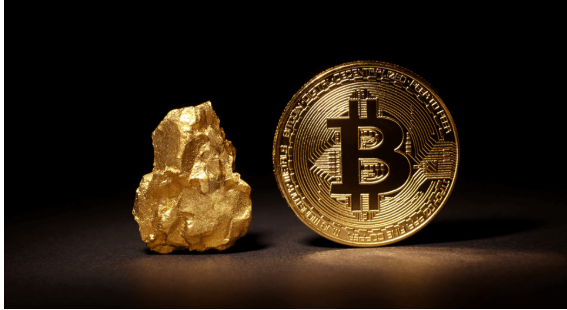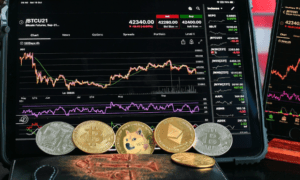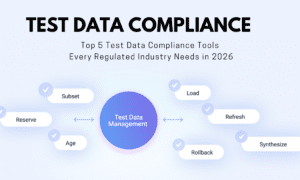Gold and cryptocurrency have long stood as distinct investment picks. One rooted in centuries of trust, and the other is pushed by using the virtual revolution. Both of them entice investors for different motives: gold for its balance and popularity as a safe-haven asset, and cryptocurrency for its capability for huge returns and innovation.
Understanding the essential variations, historical overall performance, and marketplace dynamics of these two investment alternatives is essential for making an informed choice. In this blog, we offer an in-depth comparison of gold and cryptocurrency that will help you decide which is the better investment in your portfolio.
By the end, you will have a clear understanding of which asset aligns higher with your economic goals and risk tolerance.
1. Historical Performance and Stability
Gold: Timeless Store of Value
Gold has been an image of wealth and a store of value for thousands of years. Dating back to historical civilisations, gold has served as forex, jewellery, and a measure of wealth. Its intrinsic cost and worldwide acceptance have made it a pass-to asset during economic uncertainties.
Gold’s value is evident at some stage in market downturns and inflationary periods. For instance, throughout the 2008 financial crisis, gold surged in price as traders sought protection amid worldwide economic instability.
In times of inflation, such as the 1970s and early 2000s, gold prices rose continuously, showcasing its power as an inflation hedge. Gold’s common annual return over the last 30 years hovers around 5-6%, which, while modest, reflects its stability and long-term price performance.
Cryptocurrency: The Digital Revolution
Cryptocurrency emerged with the release of Bitcoin in 2009, marking the start of a brand new era in virtual finance. Unlike online gold trading, cryptocurrencies are decentralised digital property secured by means of blockchain technology.
Bitcoin’s price soared from a few cents to tens of thousands of dollars within a decade, pushed by market hypothesis, technological advancement, and growing attractiveness.
However, cryptocurrencies are marked with the aid of high volatility. Major occasions like Bitcoin halving, regulatory crackdowns, and marketplace sentiment swings can trigger huge price changes within hours. For example, Bitcoin’s fee skyrocketed to nearly $20,000 in 2017 before crashing to $3,200 in 2018, demonstrating its extreme volatility.
Similar patterns were visible in the course of the 2021 surge, wherein Bitcoin reached over $60,000 earlier than falling back sharply.
2. Volatility and Risk Analysis
Gold: Low Volatility, High Stability
Gold is known for its low volatility compared to other funding options. Its price adjustments are frequently gradual and influenced by worldwide economic factors, inflation, and financial institution regulations.
Investors view gold as a “safe-haven” because it tends to preserve or grow its value in the course of market turbulence, making it a preferred choice for risk-averse investors. Historical records suggest that gold’s biggest one-year drop in recent years was around 28% (1980), but its recovery was steady and strong.
Cryptocurrency: High Volatility, High Reward (and Risk)
In contrast, cryptocurrencies are synonymous with high volatility. Bitcoin, Ethereum, and other virtual assets often enjoy dramatic price swings within quick intervals. This volatility is commonly driven by market hypotheses, regulatory news, technological improvements, and macroeconomic factors.
For example, Bitcoin’s price plunged nearly 50% after China’s crackdown on crypto mining in 2021, yet it additionally surged to all-time highs after important organisations started accepting it as a price.Market sentiment plays a significant role; effective information, consisting of regulatory clarity or institutional adoption, can trigger fast rate increases, even as poor information can result in sharp declines. Unlike gold, which has centuries of installed market conduct, crypto CFD trading is nevertheless proving its long-term resilience.
3. Liquidity and Accessibility
Gold
Gold is to be had in bodily paperwork like bars and cash, in addition to virtual forms together with ETFs (Exchange Traded Funds) and virtual gold. Physical gold calls for stable storage, but virtual gold offers the same exposure without logistical challenges.
Selling gold is particularly easy; however, it may incur charges, in particular for physical transactions. Gold is likewise universally recognised, making it liquid across worldwide markets.
Cryptocurrency
Cryptocurrencies exist completely in digital form, traded on global exchanges 24/7. Accessibility is a first-rate advantage, permitting customers to shop for or sell immediately, irrespective of location.
Crypto wallets facilitate secure storage and short transfers, making them an appealing choice for tech-savvy traders. The rise of decentralised finance (DeFi) has, in addition, brought better liquidity, allowing instantaneous swapping among one-of-a-kind crypto assets without intermediaries.
4. Inflation Hedge and Wealth Preservation
Gold as an Inflation Hedge
Gold has historically been a strong hedge against inflation. When fiat currencies lose purchasing power, gold’s price tends to rise, retaining investor wealth. This attribute has solidified its recognition as a long-term source of cost, specifically throughout financial downturns and hyperinflation. For instance, at some stage in the 1970s’ stagflation, gold prices surged as inflation skyrocketed.
Cryptocurrency as a Hedge Against Fiat Decline
Cryptocurrencies, especially Bitcoin, are frequently hailed as “digital gold.” With its constant delivery of 21 million cash, Bitcoin is designed to fight inflation by means of warding off the dilution of value via expanded supply. Many buyers view it as a hedge against fiat foreign money devaluation, mainly in regions facing extreme inflation, like Venezuela and Zimbabwe.
5. Regulatory Landscape
Gold is sponsored by nicely set up regulatory frameworks worldwide. Governments and critical banks have clear regulations on gold buying, selling, and possession. In assessment, cryptocurrency rules are still evolving, with varying tiers of popularity and limits throughout unique areas. Some countries fully include crypto, while others impose strict regulations or outright bans, adding an element of uncertainty for traders.
6. Security and Custody
Gold is typically stored in vaults or protection deposit bins. While bodily gold is prone to theft, insured storage mitigates this risk. Cryptocurrencies are secured via the blockchain era. However, they face cybersecurity risks like hacking and phishing. Secure wallets and two-factor authentication are crucial for defensive virtual property.
7. Cost Structure and Environmental Impact
Owning gold entails charges like storage, coverage, and transportation, mainly for physical gold. Cryptocurrency mining, on the other hand, consumes considerable power, elevating environmental worries. Bitcoin’s carbon footprint has been criticised, prompting discussions around extra energy-efficient blockchain solutions like Proof of Stake (PoS).
8. Future Outlook and Strategic Considerations
Gold and cryptocurrency constitute vastly specific visions for the destiny of finance. Gold is in all likelihood to stay a safe-haven asset with a gradual, constant boom, specifically favoured at some stage in financial uncertainties. Cryptocurrencies, however, are anticipated to hold their unstable adventure, driven by innovation, technological advancement, and regulatory evolution. With principal banks exploring digital currencies and blockchain generation becoming increasingly integrated, crypto may gain similar legitimacy in worldwide markets.
Conclusion
Both gold and cryptocurrency offer particular blessings and challenges. While gold offers time-examined balance and a hedge towards inflation, cryptocurrencies bring innovation, high-risk potential, and a groundbreaking era. A sound gold trading technique may even incorporate diversification. Your preference in the long run relies on your risk tolerance, investment horizon, and notion of digital finance’s evolution.



































